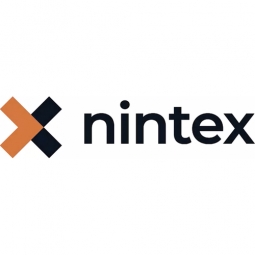Technology Category
- Functional Applications - Product Lifecycle Management Systems (PLM)
Applicable Industries
- Finance & Insurance
- Retail
Applicable Functions
- Human Resources
- Maintenance
Use Cases
- Time Sensitive Networking
Services
- System Integration
About The Customer
Kuwait International Bank is a leading banking institution based in Kuwait. The bank offers a wide range of financial services to its customers and is committed to enhancing its operations continually. The bank has a strong focus on improving both customer and employee experiences and increasing its competitiveness and market share. The bank has a workforce of 700 employees who serve its vast customer base. The bank is also committed to digital transformation and has implemented advanced solutions like Nintex Workflow and Nintex Forms to automate its business processes and enhance productivity.
The Challenge
Kuwait International Bank was facing challenges with its manual workflow creation process in SharePoint. The bank was seeking a more efficient and faster way to support complex business processes across all its departments including accounts payable, help desk, legal, human resources, security, retail banking, finance, customer service, operations, real estate, corporate banking, and IT. The existing process was not only time-consuming but also lacked the flexibility to handle intricate business operations. The bank was also struggling with slow response times to customer applications for credit cards and loans, and customer service requests. On the employee side, the bank was looking for ways to automate internal processes to reduce effort and increase accuracy.
The Solution
The bank implemented Nintex Workflow and Nintex Forms across all its departments to automate about 150 processes. This solution significantly improved both customer and employee experiences. For customers, the bank was able to reduce the response time for credit card applications from three days to an hour and loan applications from two weeks to two days. The bank also integrated Nintex with its omnichannel customer service, enabling call center agents to access resources across departments to better serve customers. On the employee side, Nintex Workflows automated internal processes, ensuring tasks were completed in the correct order, reducing the need for rework, and providing managers with transparency into the progress and status of workflows. The bank also used Nintex to automate the software development lifecycle, reducing it from 15 days to just 4.
Operational Impact
Quantitative Benefit

Case Study missing?
Start adding your own!
Register with your work email and create a new case study profile for your business.
Related Case Studies.

Case Study
Improving Production Line Efficiency with Ethernet Micro RTU Controller
Moxa was asked to provide a connectivity solution for one of the world's leading cosmetics companies. This multinational corporation, with retail presence in 130 countries, 23 global braches, and over 66,000 employees, sought to improve the efficiency of their production process by migrating from manual monitoring to an automatic productivity monitoring system. The production line was being monitored by ABB Real-TPI, a factory information system that offers data collection and analysis to improve plant efficiency. Due to software limitations, the customer needed an OPC server and a corresponding I/O solution to collect data from additional sensor devices for the Real-TPI system. The goal is to enable the factory information system to more thoroughly collect data from every corner of the production line. This will improve its ability to measure Overall Equipment Effectiveness (OEE) and translate into increased production efficiencies. System Requirements • Instant status updates while still consuming minimal bandwidth to relieve strain on limited factory networks • Interoperable with ABB Real-TPI • Small form factor appropriate for deployment where space is scarce • Remote software management and configuration to simplify operations

Case Study
How Sirqul’s IoT Platform is Crafting Carrefour’s New In-Store Experiences
Carrefour Taiwan’s goal is to be completely digital by end of 2018. Out-dated manual methods for analysis and assumptions limited Carrefour’s ability to change the customer experience and were void of real-time decision-making capabilities. Rather than relying solely on sales data, assumptions, and disparate systems, Carrefour Taiwan’s CEO led an initiative to find a connected IoT solution that could give the team the ability to make real-time changes and more informed decisions. Prior to implementing, Carrefour struggled to address their conversion rates and did not have the proper insights into the customer decision-making process nor how to make an immediate impact without losing customer confidence.

Case Study
Digital Retail Security Solutions
Sennco wanted to help its retail customers increase sales and profits by developing an innovative alarm system as opposed to conventional connected alarms that are permanently tethered to display products. These traditional security systems were cumbersome and intrusive to the customer shopping experience. Additionally, they provided no useful data or analytics.

Case Study
Real-time In-vehicle Monitoring
The telematic solution provides this vital premium-adjusting information. The solution also helps detect and deter vehicle or trailer theft – as soon as a theft occurs, monitoring personnel can alert the appropriate authorities, providing an exact location.“With more and more insurance companies and major fleet operators interested in monitoring driver behaviour on the grounds of road safety, efficient logistics and costs, the market for this type of device and associated e-business services is growing rapidly within Italy and the rest of Europe,” says Franco.“The insurance companies are especially interested in the pay-per-use and pay-as-you-drive applications while other organisations employ the technology for road user charging.”“One million vehicles in Italy currently carry such devices and forecasts indicate that the European market will increase tenfold by 2014.However, for our technology to work effectively, we needed a highly reliable wireless data network to carry the information between the vehicles and monitoring stations.”

Case Study
Ensures Cold Milk in Your Supermarket
As of 2014, AK-Centralen has over 1,500 Danish supermarkets equipped, and utilizes 16 operators, and is open 24 hours a day, 365 days a year. AK-Centralen needed the ability to monitor the cooling alarms from around the country, 24 hours a day, 365 days a year. Each and every time the door to a milk cooler or a freezer does not close properly, an alarm goes off on a computer screen in a control building in southwestern Odense. This type of alarm will go off approximately 140,000 times per year, equating to roughly 400 alarms in a 24-hour period. Should an alarm go off, then there is only a limited amount of time to act before dairy products or frozen pizza must be disposed of, and this type of waste can quickly start to cost a supermarket a great deal of money.




